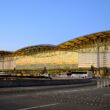When it comes to the weather, San Francisco is known for its unique climate patterns that often leave residents and visitors puzzled. In this article, we will explore the intricacies of San Francisco weather, providing you with a comprehensive guide to understand and prepare for the city’s ever-changing atmospheric conditions. From the cool summers to the frequent fog and sudden temperature shifts, we will delve into the factors that contribute to San Francisco’s distinctive climate. So, grab a jacket and let’s explore the fascinating world of San Francisco weather together!
Table of Contents
- Understanding San Francisco’s Microclimates
- The Role of Ocean Currents
- The Influence of Topography
- The Famous San Francisco Fog
- The Seasons in San Francisco
- 5.1. Summer: Cool and Misty
- 5.2. Fall: Indian Summer and Temperature Swings
- 5.3. Winter: Rainy and Chilly
- 5.4. Spring: Blooming and Unpredictable
- Dressing for San Francisco Weather
- Weather-Related Activities and Events
- Weather Forecasting in San Francisco
- Climate Change and its Impact
- The Future of San Francisco Weather
- Conclusion
- FAQs (Frequently Asked Questions)
1. Understanding San Francisco’s Microclimates
San Francisco’s microclimates are a fascinating phenomenon that distinguishes different neighborhoods within the city. Due to its unique geography, San Francisco experiences distinct variations in weather patterns from one neighborhood to another. For example, the eastern parts of the city tend to be sunnier and warmer, while the western areas are often cooler and enveloped in fog. This diversity adds to the charm and intrigue of San Francisco’s weather.
2. The Role of Ocean Currents
The Pacific Ocean plays a crucial role in shaping San Francisco’s weather. The California Current, a cold oceanic current flowing southward along the coast, brings cool air and moderates the temperature in the city. As the ocean currents interact with the prevailing winds, they create the marine layer, a thick blanket of fog that frequently rolls into San Francisco.
3. The Influence of Topography
San Francisco’s unique topography, characterized by hills and valleys, greatly influences its weather patterns. The city’s undulating terrain affects wind circulation, resulting in the creation of microclimates. As air moves across the hills and valleys, it can cause rapid temperature changes and influence the direction and intensity of the fog.
4. The Famous San Francisco Fog
One of the most iconic features of San Francisco’s weather is the fog that often shrouds the city. Known affectionately as “Karl the Fog,” it can roll in unexpectedly, transforming clear blue skies into a misty spectacle. The fog adds a touch of mystique to the city’s atmosphere and is a familiar sight for locals and tourists alike.
5. The Seasons in San Francisco
5.1. Summer: Cool and Misty
Contrary to the typical summer heat experienced in many parts of the world, San Francisco’s summers are characterized by cool temperatures and foggy conditions. The average temperature rarely exceeds 70 degrees Fahrenheit (21 degrees Celsius). It’s essential to dress in layers and carry a jacket, as the weather can change abruptly throughout the day.
5.2. Fall: Indian Summer and Temperature Swings
Fall in San Francisco often brings a weather phenomenon known as the “Indian Summer.” During this period, the city experiences a sudden surge in temperatures, offering warm and sunny days. However, it’s important to note that San Francisco’s weather remains unpredictable, and temperature swings are common even during this season.
5.3. Winter: Rainy and Chilly
San Francisco’s winters are relatively mild compared to other parts of the United States, with temperatures rarely dropping below 40 degrees Fahrenheit (4 degrees Celsius). However, the city receives a significant amount of rainfall during this season. It’s advisable to carry a waterproof jacket and an umbrella when exploring the city during winter months.
5.4. Spring: Blooming and Unpredictable
Springtime in San Francisco is a time of blossoming flowers and vibrant colors. However, the weather during this season can be highly variable, with sunny days, rain showers, and occasional temperature fluctuations. It’s wise to be prepared for any weather condition when visiting San Francisco in the spring.
6. Dressing for San Francisco Weather
Due to the ever-changing weather in San Francisco, it’s essential to pack and dress appropriately. Layering is key to adapt to sudden temperature shifts throughout the day. Start with a base layer, add a sweater or light jacket, and top it off with a waterproof outer layer. Don’t forget to carry a scarf and an umbrella for added protection against the elements.
7. Weather-Related Activities and Events
San Francisco’s unique weather provides ample opportunities for engaging in various activities and attending exciting events. From kite flying at Crissy Field on windy days to exploring Golden Gate Park’s botanical gardens during sunny spells, there’s something for everyone. Additionally, the city hosts numerous festivals and outdoor concerts throughout the year, taking advantage of the pleasant weather.
8. Weather Forecasting in San Francisco
Accurate weather forecasting is crucial for residents and visitors alike in San Francisco. Local meteorologists and weather services employ advanced technologies to provide up-to-date information on the ever-changing weather conditions. Utilize reliable weather apps or websites to stay informed about the forecast, ensuring you are prepared for the day’s weather events.
9. Climate Change and its Impact
Like many other places around the world, San Francisco is not immune to the effects of climate change. Rising temperatures, altered precipitation patterns, and increased frequency of extreme weather events are some of the impacts observed in the region. Efforts to mitigate and adapt to these changes are underway, emphasizing sustainable practices and resilience.
10. The Future of San Francisco Weather
As our understanding of climate science deepens, so does our ability to predict future weather patterns. Scientists and researchers continue to study San Francisco’s unique climate dynamics to gain insights into long-term trends. By monitoring changes in temperature, precipitation, and other meteorological factors, we can better prepare for the future and adapt to a changing climate.
Conclusion
San Francisco’s weather is undoubtedly a fascinating subject, offering a rich tapestry of microclimates, foggy days, and sudden temperature swings. Understanding the city’s weather patterns and being prepared for its idiosyncrasies is essential for residents and visitors alike. So, next time you visit the “City by the Bay,” embrace the layers, embrace the fog, and let San Francisco’s weather add an extra layer of charm to your experience.
Similar Articles
- What to Do in San Francisco
- Car Rental in San Francisco
- Twin Peaks San Francisco
- Lombard Street San Francisco
FAQs (Frequently Asked Questions)
1. Is San Francisco always foggy?
No, San Francisco is not always foggy. While fog is a common occurrence, the weather can vary throughout the year, with periods of clear skies and sunshine.
2. What is the best time to visit San Francisco?
The best time to visit San Francisco is during the fall season, from September to November, when the weather is typically warm and pleasant.
3. Does it rain a lot in San Francisco?
San Francisco experiences a moderate amount of rainfall, with most of it occurring during the winter months. However, it’s always a good idea to carry a light rain jacket or umbrella when visiting.
4. How should I dress for San Francisco’s cool summers?
During San Francisco’s cool summers, it’s recommended to dress in layers. Start with a light sweater or jacket and add or remove layers as needed throughout the day.
5. Are weather forecasts accurate for San Francisco?
Weather forecasts for San Francisco are generally reliable. However, due to the city’s microclimates, it’s advisable to check the forecast closer to your visit and be prepared for sudden weather changes.









